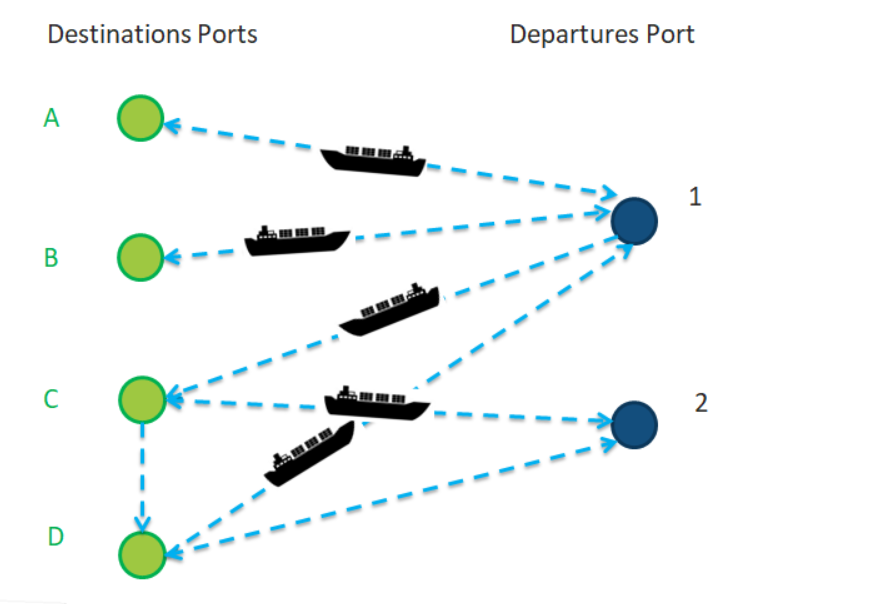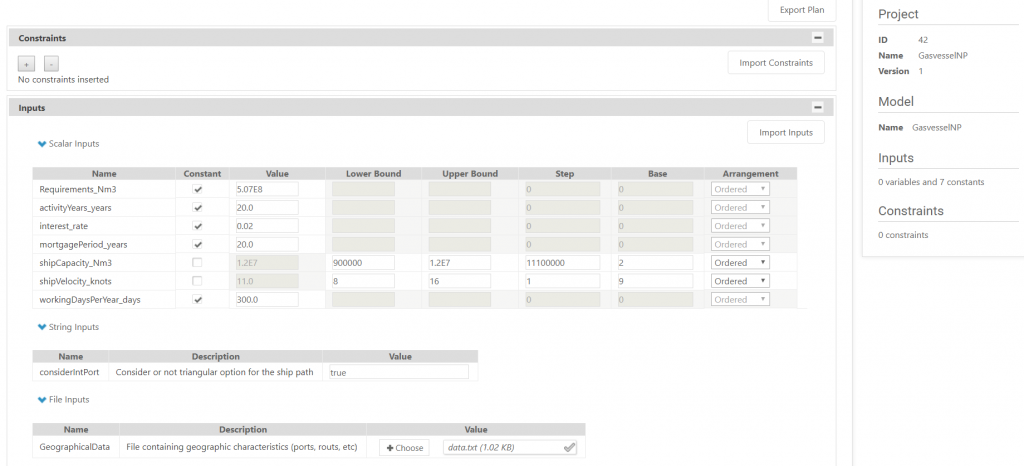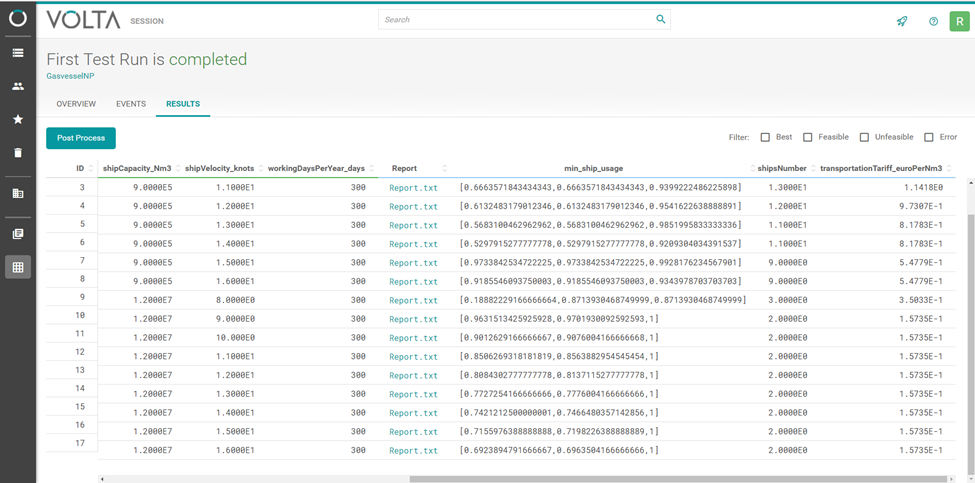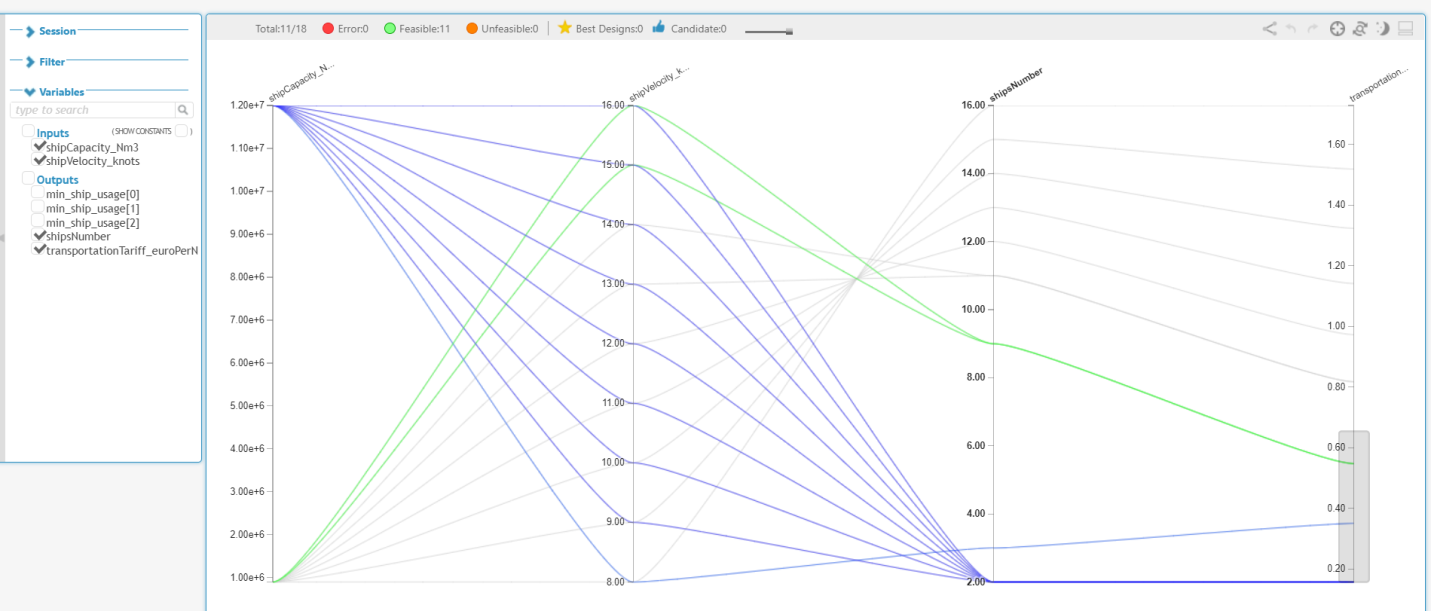One of the steps toward successful adaption of the Gasvessel concept is the optimization of gas delivery from the identified source locations to the identified markets for different scenarios and geographical areas. This will provide indications on the optimal ship size, ship speed and fleet size in order to reach the lowest gas transport costs per unit volume (fig.1).

Figure 1: Example of CNG transportation scenario
The complete optimization process is managed by the ESTECO Enterprise solution VOLTA. VOLTA is a web-based collaboration environment that orchestrates simulated data and multi-disciplinary business processes, enabling conscious decision making and innovative product development.
To start the scenario optimization, the user first has to set up the variables to be optimized; this could be a range for the ship’s capacity and velocity. Also the scenario parameters, such as gas requirements and distances between ports have to be set. The simulations can then be started to run on the selected computational queue. All these settings can be done on the dedicated dashboard in fig. 2.

Fig.2: Shared optimization project in VOLTA: definition of parameters
On the Session panel of the VOLTA platform (fig.3), users can analyse and visualize the optimization results. Any configuration that was evaluated by the algorithm is defined in a different row in the session table. For ease of use, the evaluated configuration can be ordered from the one giving the lowest transportation costs to the highest costs.


Fig.3: Shared optimization project in VOLTA: Session table
Choosing the optimal configuration, a text file reports all the information related to the scenario, including fleet size, ship sizes and velocities, ship usages and destinations.
In order to achieve a deeper understanding about parameters and objectives, several analysis tools are available in VOLTA. Among them, the parallel chart (fig.4) which allows to compare the values of any parameter (the columns) for different configurations (each line). By filtering the values of interest (e.g., low transportation costs, last column in the chart), we can identify the optimal configurations, and analyse how the values of any parameter is correlated.

Fig.4: Shared optimization project in VOLTA: Parallel chart for low ship number and high ship capacity
The VOLTA tool will be used by all Gasvessel partners that are in charge of designing the ships for CNG transportation in the defined regions and scenarios. The ships will then be designed on the basis of the outcome of the Decision Support Tool, which allows to minimize the global transportation costs.
